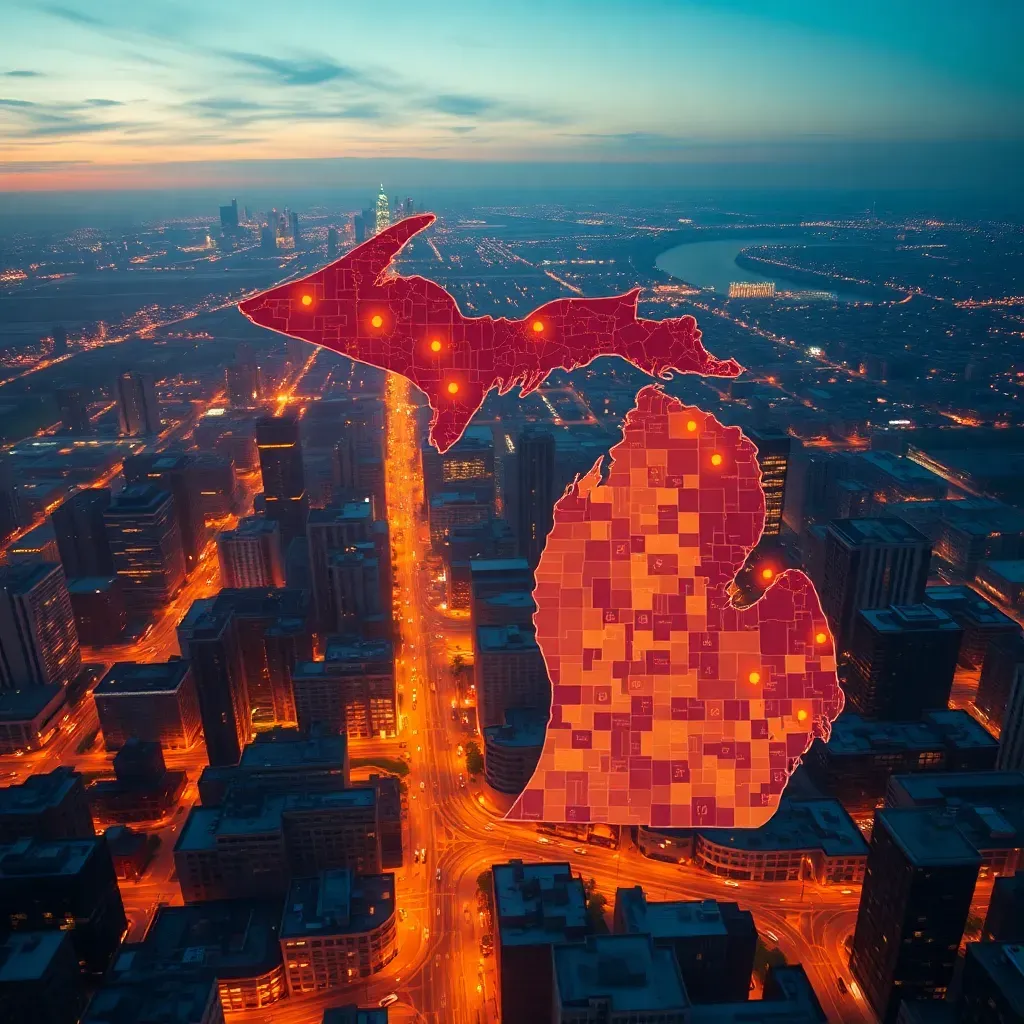Crime rate by city in Michigan 2025: shocking hotspots revealed
- What You Really Need to Know About Crime Rates in Michigan Cities in 2025
- How Crime Data in Michigan Is Collected and What It Really Tells Us
- The Most Dangerous Cities in Michigan for 2025: A Deep Dive Into The Data
- Smaller Cities and Townships: The Hidden Crime Hotspots You Might Not Expect
- What Locals Are Saying: Real Opinions From Michigan Residents About Safety in Their Cities
- Practical Tips for Staying Safe in Michigan’s Crime Hotspots in 2025
- Understanding Crime Rate Michigan: Key Insights for 2025
- Comparing Crime Rates Across Michigan Cities: What The Numbers Really Mean For You
- How Michigan Police and Law Enforcement Are Responding to Crime in 2025
- What To Expect Next: Crime Trends and Safety Outlook For Michigan Cities Beyond 2025
- Key Takeaways on Michigan’s Crime Rate by City in 2025
- Opinions From The Community: Voices On Michigan’s Crime Reality
- References and Further Reading
What You Really Need to Know About Crime Rates in Michigan Cities in 2025
Crime in Michigan’s cities continues to be a hot topic for residents and visitors alike. In 2025, understanding the crime rate by city in Michigan is more important than ever, especially for those deciding where to live, work, or open a business. Crime rates vary widely across the state, with some cities showing higher levels of violent crime and others struggling more with property crime or drug-related incidents.
When we talk about “crime rate,” we’re usually referring to the number of reported crimes per 100,000 people. This includes two main categories: violent crime (like assaults, robberies, and homicides) and property crime (such as burglary, theft, and vandalism). It’s important to remember that these numbers aren’t perfect — not every crime gets reported, and some cities report data differently. Still, this snapshot gives us a useful look at where safety concerns are rising or falling.
Whether you’re a parent worried about neighborhood safety, a small business owner keeping an eye on local risks, or just someone curious about Michigan’s urban landscape, knowing the crime trends city-by-city can help you make smarter, safer choices.
How Crime Data in Michigan Is Collected and What It Really Tells Us
Michigan’s crime data mainly comes from the Records Management System (RMS) used by police departments statewide. This system logs incidents reported to law enforcement, which then feed into the Real-Time Crime Index (RTCI). The RTCI aims to provide a rolling, up-to-date view of crime trends by compiling data from many agencies.
However, not all cities report their crime data equally. Some have more complete and timely reporting, while others lag behind or miss certain types of incidents. This means that comparing crime rates between cities can sometimes be misleading. For example, a city with better reporting might look worse on paper than one with underreported incidents.
The RTCI uses “rolling 12-month totals” to smooth out seasonal crime fluctuations. This means you’re seeing a snapshot of the past year’s crime activity, updated regularly. It’s a helpful way to spot trends but not a precise month-to-month count.
Crime data includes various categories: violent crime, property crime, drug-related offenses, and even motor vehicle deaths. This broad approach helps capture the full picture of public safety challenges in Michigan’s cities.
The Most Dangerous Cities in Michigan for 2025: A Deep Dive Into The Data
Several Michigan cities stand out as having higher crime rates in 2025. These include Detroit, Flint, Saginaw, Pontiac, Warren, Lansing, Grand Rapids, Kalamazoo, Dearborn, and Muskegon. Each has its own mix of challenges, from gang-related violence to economic struggles that can fuel crime.
| City | Crime Rate (per 100,000) | Homicide Rate | Property Crime Rate | Violent Crime Rate |
|---|---|---|---|---|
| Detroit | 1,200 | 45 | 900 | 300 |
| Flint | 1,050 | 38 | 750 | 300 |
| Saginaw | 980 | 30 | 700 | 280 |
| Pontiac | 900 | 25 | 650 | 250 |
| Warren | 850 | 20 | 600 | 230 |
| Lansing | 800 | 18 | 580 | 220 |
| Grand Rapids | 780 | 15 | 550 | 230 |
| Kalamazoo | 750 | 12 | 520 | 230 |
| Dearborn | 700 | 10 | 480 | 220 |
| Muskegon | 680 | 8 | 460 | 210 |
Many locals describe certain neighborhoods in these cities as rough or gritty, often pointing out areas with less street lighting or lower police presence at night. Issues like gang activity and drug trafficking contribute to the perception of these places as dodgy or unsafe. Economic hardships also play a role, as communities with fewer resources sometimes see higher crime incidents.
While big cities get most of the attention, some smaller Michigan towns and charter townships are showing surprising crime trends in 2025. WalletHub’s recent study on small cities (populations between 25,000 and 100,000) found many ranking in the more dangerous half nationwide.
These sketchy spots in Michigan often have issues with property crime, drug poisonings, and motor vehicle deaths. Township monitors and deputy reports reveal that some crime-heavy cities in Michigan 2025 are actually smaller communities where residents might not expect such challenges.
Local law enforcement and community policing programs are working hard to tackle these trouble areas. Efforts include neighborhood watch groups, increased patrols, and outreach programs aimed at reducing drug-related incidents and improving overall safety.
What Locals Are Saying: Real Opinions From Michigan Residents About Safety in Their Cities
“Living in Detroit, I’ve seen some rough spots, especially after dark. Neighbors often warn each other about certain blocks where incidents happen more frequently. It’s not all bad, but you gotta stay alert.” – Local resident, Detroit
“In Flint, parents talk a lot about keeping kids away from areas with less lighting and fewer police at night. The community is tight, but there are definitely some dicey neighborhoods.” – Flint community forum user
“As a small business owner in Saginaw, I watch the crime stats closely. Some areas are shady, but community policing has helped a lot. We’re hopeful for better days.” – Saginaw local interview
Practical Tips for Staying Safe in Michigan’s Crime Hotspots in 2025
- Stay in well-lit areas, especially at night, to avoid risky towns in the US and rough neighborhoods in Michigan.
- Pay attention to local news and community alerts about recent crime incidents.
- Join or support neighborhood watch groups to help keep your area safer.
- If you witness a crime or feel unsafe, contact local police immediately; know emergency numbers like 911.
- Use online crime maps and data tools to check the safety of neighborhoods before moving or visiting.
Understanding Crime Rate Michigan: Key Insights for 2025
When analyzing the crime rate Michigan-wide, it’s clear that variations exist not only between large cities but also in smaller communities and townships. The overall Michigan crime rate reflects economic, social, and law enforcement factors unique to each area. By studying these patterns, residents and officials can better target resources and prevention efforts.
- The crime rate Michigan experiences is influenced heavily by urban centers like Detroit and Flint, where economic hardship and population density contribute to higher crime statistics.
- Rural and suburban areas typically show lower Michigan crime rate figures but can still face challenges such as property crime and drug-related offenses.
- Understanding the Michigan crime rate in context helps newcomers and businesses make informed decisions about relocation and investment.
Keeping abreast of the Michigan crime rate is essential for recognizing emerging hotspots and areas where community interventions have been successful.
Comparing Crime Rates Across Michigan Cities: What The Numbers Really Mean For You
| City | Crime Rate | Homicide Rate | Safety Ranking | Affordability | Quality of Life |
|---|---|---|---|---|---|
| Detroit | High | Very High | Low | Moderate | Challenging |
| Grand Rapids | Moderate | Low | Moderate | High | Good |
| Rochester | Low | Very Low | High | High | Excellent |
| Flint | High | High | Low | Low | Challenging |
Living in a city with a higher crime rate often means balancing safety concerns with affordability and access to jobs or amenities. Some crime hotspots in Michigan 2025 might offer lower housing costs but require extra caution. Meanwhile, safer cities tend to have higher living costs but provide a more stable environment for families and businesses.
How Michigan Police and Law Enforcement Are Responding to Crime in 2025
Michigan State Police (MSP) and local departments are stepping up efforts to tackle crime using data-driven approaches. The use of RMS crime incident tracking and the Real-Time Crime Index helps law enforcement identify trends and allocate resources more effectively.
Community engagement programs aim to build trust and cooperation between police and residents, especially in sketchy spots in Michigan. However, challenges like limited staffing and funding continue to affect how quickly and thoroughly police can respond.
Some success stories include neighborhood patrol increases and drug intervention programs that have reduced certain types of crime. Still, many areas remain dodgy or wild, requiring ongoing attention.

What To Expect Next: Crime Trends and Safety Outlook For Michigan Cities Beyond 2025
Early signs from 2025 data suggest some cities might see gradual improvements as economic recovery and social programs take hold. Policing reforms and community initiatives could shift crime patterns, but it’s too soon to predict major changes.
Residents and newcomers should keep an eye on local reports and participate in community safety efforts. Staying informed and involved is key to helping neighborhoods become safer over time.
Key Takeaways on Michigan’s Crime Rate by City in 2025
- Crime rates vary widely across Michigan’s cities, with Detroit, Flint, and Saginaw among the higher-risk areas.
- Smaller towns and charter townships can also be risky towns in the US despite their size.
- Data from RMS and RTCI provide the best available snapshot but have limitations.
- Local insights reveal concerns about lighting, police presence, and drug activity in rough neighborhoods in Michigan.
- Practical safety tips and community programs can help residents navigate these challenges.
- Comparing crime rates alongside affordability and quality of life helps balance decisions about where to live or work.
- Law enforcement is using technology and community engagement to address crime but faces ongoing hurdles.
- Watching emerging trends and staying involved is crucial for future safety improvements.
Opinions From The Community: Voices On Michigan’s Crime Reality
“The neighborhood watch in Pontiac has made a difference. We still have some shady spots, but people feel safer knowing neighbors look out for each other.” – Pontiac resident
“In Warren, police have increased patrols in areas where drug trafficking was a problem. It’s not perfect, but it’s a step forward.” – Local law enforcement official
“I moved to Grand Rapids because it felt safer than Detroit. The crime stats helped me decide, but I still stay aware of crime incidents and community alerts.” – New resident
References and Further Reading
What do you think about the crime rate by city in Michigan 2025? Have you noticed changes in your neighborhood? How would you like to see local authorities improve safety? Share your thoughts, questions, or stories in the comments below!
 Top violent cities in Michigan: shocking hotspots you won’t believe
Top violent cities in Michigan: shocking hotspots you won’t believe Is Detroit crime rate for expats worse than you think? Find out now
Is Detroit crime rate for expats worse than you think? Find out nowSi quieres conocer otros artículos parecidos a Crime rate by city in Michigan 2025: shocking hotspots revealed puedes visitar la categoría Michigan.

Leave a Reply